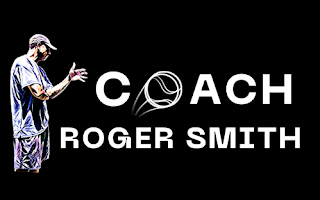Avoid Danger when not connected to Primary Purpose-Here’s How!
Connecting Primary Purpose in sports: I always encourage and assist my players in finding their primary purpose and connecting it to their sport…..
Connecting Primary Purpose in sports:
When I team up with an aspiring world class professional tennis player/athlete, I always encourage and assist my players in finding their primary purpose and connecting it to their sport.
Distinguish Primary Purpose:
It is very important for athletes to understand that a primary purpose is different than a secondary purpose.
Defining primary Purpose:
An athlete’s primary purpose is an ACTION, that they have complete control of, connected to their deepest value(s) of playing that sport.
Example of an athlete’s Primary Purpose:
For some athletes, like myself, it may be about the goal of using our sport as a vehicle to teach/show others in our small hometown that there are no limitations in aspiring for something bigger than our town had to offer.
Quality of athlete’s actions:
It was about the quality of our actions that was always present, in whatever we did, that played a key role on our journey towards the fulfillment of our secondary purpose (end result).
How to Show quality actions:
Primary purpose is in an athlete’s state of consciousness. It allows for our principal, fundamental, predominant or independent objective in which we commit to something (our fight, our effort, our composure, our character, our style of play, our work ethic, etc..)
Defining Secondary Purpose:
An athlete’s secondary purpose, while a great motivator, is anything that an athlete desires to do or achieve but actually does not have complete control of. It is a PURPOSE CONCERNING CONTENT.
Athletes common confliction with connecting purpose:
Most, if not all, of the athletes that I start out coaching are frequently conflicted with their connection of primary purpose. They usually describe their secondary purpose, the end state, when I ask the question.
Danger when conflicted with purpose:
The danger of having a secondary purpose as a primary purpose makes it very, very difficult to achieve goals because secondary purposes are not in their complete control (Their ultimate ranking goals, their personal number of titles won and achievements, their desired financial goals and competitive earnings, their worldwide fame or any other other personal sporting results, etc..).
Consequences with conflicted purpose:
Athletes that do this usually end up feeling like under achievers to failures and become very disheartened and thus label themselves unsuccessful athletes.
Aligning passion with your Primary Purpose:
During the journey with my athletes I also stress the extreme importance of understanding and aligning their passion with their primary purpose!
Example of passion with alignment to Primary Purpose:
When I played I had to align my passion to playing the game of tennis with how I wanted to be seen as a competitor or person of character with my primary purpose (mentioned above).
Consequences when passion is not in alignment:
If not in alignment my passion would have dwindled due to my shortfall of direction. The risk of chaos in a player’s journey (disorganization, vulnerability, frustration, no confidence, etc..) can lead to a complete melt down.
Results when alignment is off:
normally results in loss of hope.
Another example when not in alignment:
Passion is like (the icing) and primary purpose as (the cake). Without the cake the icing will run all over the place with no substance to it. You can only eat so much icing before you start to feel sick.
Danger when not connected to Primary Purpose:
In summary and as mentioned throughout, now you can see why it is so important for an athlete to connect with their primary purpose and the danger when it’s not.
Top athletes master this connection:
I truly believe especially now as a coach that all top contenders of their sport have learned, completely understand and have clearly made this connection through their successful careers.
Endure, sustain and have fun when connected:
Again, connecting my players primary purpose gives them endurance to sustain great competitiveness through the ups and downs of the many challenges that comes within their sport. It even makes for much more fun when competing!
Note: An athlete can have more than one purpose. In fact in many cases the more the better pending on specific individual goals. Listed below are four purpose:
1. Prosocial Purpose pertains to an athlete wanting to help others, influence the societal structure or even increasing their happiness.
2. Creative Purpose pertains to an athlete’s artistic goals and their propensity for originality.
3. Financial Purpose pertains to an athlete’s financial well-being and competitive success.
4. Personal Recognition Purpose pertains to their desire for recognition and respect from colleagues.




